After a such a lovely Indian summer at the end of October, it was unfortunate having cold and wet days in which to prepare for my departure. So it was that when it was time to get the van moved out and on to my drive, it had to be done in the rain.
Although my sailing wasn’t due to leave until 22.30 on Sunday 2nd of November, I decided to begin my 70 mile journey whilst it was still light. The drive down the A3 was uneventful and done in fairly light traffic. In spite of having five hours in hand when I reached Portsmouth, already there were two long queues waiting for check in to open. We didn’t have long to wait. They opened within fifteen minutes. Gradually I crawled towards the kiosk to be greeted by a young ‘mademoiselle’ who only required my passport and booking reference. She handed me a boarding card and an electronic cabin door key, then said “Excuse me – I need to measure your caravan”. With that she left her cabin and disappeared behind the car. I’ve heard that measuring happens at some ports, but I haven’t met it before. Having satisfied herself, she returned to her seat, smiled sweetly and told me to proceed. I went forward to where we were sorted into various lanes according to the size and type of our vehicles.. As we were told to be back at our vehicles at 20.00 hours, I went into my van to enjoy a pre-prepared dinner. The Cap Finistere docked just before 8pm and shortly afterwards we moved to the quayside and formed queues ready for boarding.
Eventually my queue began to move forward, so I started the engine, slipped into gear and stalled. …………. Started the engine again, selected first gear….. and stalled again. I then realized that however much I pressed the accelerator, the revs didn’t increase. Panic………..!!! The Brittany Ferries guy was frantically waving me to come forward – and I could do nothing. I got out to tell him, and then went back to the car. I switched on and off a few times, and eventually the engine behaved as normal. I was able to get on my way. The joys of modern technology!! Long gone is the cable which connected the pedal to the fuel pump. Now it’s a sensor which sends electronic signals to the computer. Maybe I’m old fashioned, but I know which is more reliable. However, I’m relieved to say the fault didn’t show itself again.
By 9.45 I was installed in my cabin, which was an inside one with two berths – one at ground level and the other one reached by a ladder. With a small wardrobe and ensuite shower and toilet room, it’s adequate for the two night crossing. Internet is available in various places on board, although the connection is extremely slow. Sea conditions in the channel were moderate so I was able to enjoy a good night’s sleep. At 7am we docked in Roscoff for a change of crew and to allow a few cars to board.
 Change over of crew at Roscoff
Change over of crew at Roscoff
The stay was supposed to be of 90 minutes duration but it was 11.30am before we were under way. The reason for the over-long visit was never explained.
The rocky coastline together with all the outcrops of rock sticking up out of the sea must make it difficult for the ship the size of Cap Finistere to berth in Roscoff. On our second night, spent in Biscay I was aware of rather more rolling in the ship. A couple of times I felt I was about to be tipped out of bed! Most people on board were up early ready for the 6.45 arrival. We were called to rejoin our vehicles. But then the wait started I suppose that’s the penalty for having a ferry with only one loading deck. Although vehicles are stored on three levels, two decks wait whilst the lowest is cleared. Even cars on the mezzanine were unloaded before we were waved forward. Thus I didn’t move until 45 minutes after the first vehicle rolled off the ramp.
By 8.15 I had left the dockyard area behind and was heading for the AP68, then the AP1 – the toll motorway to Burgos. It isn’t essential to use this toll route but it saves having to drive through towns and along single carriageway roads. And the service areas make it convenient for breaks. If one is heading for the Costa del Sol, this toll is the only one you need use. There are toll motorways around Madrid but there’s no benefit in using them – the dual carriageways are fine.. By the time Burgos was reached, my dashboard info was indicating that I’d reached a height of 3260 feet. Not surprising that my mpg figure was a disappointing 26.7mpg. Since last year the kiosk attendants at the toll booths have joined the unemployed and tolls tickets now need to be put into a machine with the indicated fee. From Bilbao the charge is €21.50 After Burgos the road to Madrid is an excellent dual carriageway surface.. My route plan was to stop overnight at Riaza, a village not far from the main road, then journey on the next day, through Segovia and Avila, but when I arrived close to my stop, the rain had started, the dashboard was showing 6C and the sky was black. A quick decision was needed. I gambled on finding better weather over the mountains and closer to Madrid. The climb over Somosierra was ahead of me so dropping down a couple of gears, I began the long pull to the top. When the tunnel was reached, outside temperature was down to 2C and then came the long run down the other side. But already I could see brighter weather ahead. I reached La Cabrera at Km57 – a useful night halt which I’ve used several times in the past, but decided to plod on through Madrid and head for Aranjuez – 60 or so miles away to the south of the city. By the time I was in Madrid the temperature had risen to a much better 17C with a bright blue sky. I chose to follow Tom tom’s suggestion for the M40 ring road, but a peculiarity of this route is that the exit for the A4 is made from lane three – the fast lane – so it’s a hair raising few minutes getting the outfit into the fast moving traffic flow.
 Not many drivers want to slow down to let a towed caravan in front of them. There are three ring roads around the city. The M30 goes the closest to the centre, then the M40 makes a slightly wider ring, and finally the M50 which is the outer ring. The M50 usually carries the least traffic but it adds approximately 12 miles to the journey if driving north/south.
Not many drivers want to slow down to let a towed caravan in front of them. There are three ring roads around the city. The M30 goes the closest to the centre, then the M40 makes a slightly wider ring, and finally the M50 which is the outer ring. The M50 usually carries the least traffic but it adds approximately 12 miles to the journey if driving north/south.
It was around 4.15pm as I arrived at the camp site at Aranjuez and decided to book for two nights. Always plenty of room at this time of year so I selected a pitch with a fairly easy reverse angle. But it’s never easy when travelling without a passenger to guide you back.. After having got out of the car twice to check for trees, a neighbour came to guide me. Satisfied with my position, I got out to thank him and to my utter surprise, he said “I’ve just been reading your blog”. Apparently he saw my CT sticker in the back window, but also recognised me from a picture.
Legs went down first then I plumbed in the water, connected the electric and got the kettle on for a long awaited cup of tea. With the water boiler filling, I sat back for a well-earned rest. By the time I’d recuperated from the day’s efforts it was almost dark but then realized there was no water at the taps. Outside to investigate at the Aquaroll. There was no sound from the pump. A quick check with a multimeter showed 13volts at the socket, so having filled the boiler, the pump decided it had reached the end of its life. All I could do was leave it till tomorrow.
Part 2 0-0-0-0-0-0-0-0-0-0
Wednesday……………This morning I tried giving the impeller a turn but to no avail. All connections within the block were good, so I dug out another pump which I carry as a spare. It isn’t a Whale but it produces a reasonable supply. Until such time as I arrive at El Pino it will suffice and then I will get a new one sent out.
Camping Internacional de Aranjuez is listed as a Cat 1 site. Maybe it was a few years ago, but it’s now beginning to lose it’s gloss. The shower and toilet block still functions reasonably well but with cracked tiles, broken taps, and the long-gone soap dishes missing from the showers, it’s in need of some TLC. Also the long lines of semi-permanent weekender caravans with a motley collection of plastic sheds, rickety fences and stretched tarpaulins give the site an appearance of a shanty town. With ACSI membership card, site fees are €18 per night.
It was a lovely afternoon so I got out my bike and rode around to the Palacio Real de Aranjuez.
This spendid looking palace together with the other at El Escorial were built during the 18th Century for King Phillip II and his family. It was later enlarged by having two additional wings added. The nearby Rio Targus has been diverted in places to allow water gardens to be formed and to allow an island to be formed.
The river continues on its way passing by the site.
Thursday……………. Yesterday’s clear skies continued into the night, consequently the temperature was just on freezing when I was ready to leave the site. The road works around the palace precincts which I noticed yesterday decided me to head back towards Madrid in order to join the A4. It added a few miles to the journey, but Aranjuez isn’t an easy town to tow a caravan through at best of times. Traffic heading south was extremely light so I made good progress. Not so on the other side heading north. On the long hill sweeping down into the Aranjuez valley, an HGV had jackknifed, blocking both lanes. The lines of waiting traffic went back for several miles.
For the next 100 miles or so the area is relatively flat and is Don Quixote country. Various signs and symbols along the roadside advertise the fact. Also on the distant hilltops can be seen rows of windmills.
And then the flat landscape suddenly changes. The road begins to drop towards the Despenaperros ravine. For several years the highway authority has been slowly building a carriageway in the sky across the ravine. I travelled on it for the first time last year. In previous years the original A4 roads snaked their way down the ravine in a series of hairpin bends, along the valley bottom, then up the far side. But now the motorway crosses the ravine, supported on huge concrete stilts. Very much quicker for the driver, but at a cost to the beautiful valley. On the southern rim of the ravine is Santa Elena where I’d planned to stop for the night – but it was only 11.15am. Much too early to stop. So I decided to carry on for another 190 miles to my next planned stop at Seville. I arrived at Camping Villsom at about 4pm only to find that one of the several road humps in Aranjuez had smashed my jockey-wheel. Therefore pitching the van was extremely difficult, not to say worrying, since I know how much manoeuvring of the van there will be to do once I arrive at El Pino.
Part 3 0-0-0-0-0-0-0-0-0-0
Camping Villsom is a wooded site, although some pitches are more open. The terrain is sandy, consequently it’s easily transferred from shoes to car or caravan. It does however drain quickly after rain. There’s only the one toilet and shower block which has obviously been recently refurbished and is of a high standard. I was surprised to see the open air swimming pool still functional. But maybe not – it was 20C when I arrived. So far I’ve only been able to find two water points. Without a fair length of hose, both are Aquaroll un-friendly since the taps are built up on ornamental pedestals. Both pedestals are flamboyantly decorated with picture tiles depicting the adventures of Don Quixote.
Once night falls the site is in complete darkness since there are no street lights. Villsom has a Cat II certificate and site fees are on the high side. According to the tariff, as a lone traveller I will pay €21 per night and they are not members of ACSI. I guess that’s the penalty for staying at a site close to the centre of a tourist city.
Friday…………….A change in the weather. Yesterday’s blue skies have gone. This morning it’s cloudy and dull. However, I’ve decided to head for Italica, some 16 miles away. This is the large area where the Roman City of Italica once stood. For travellers wishing to visit this attraction it’s worth mentioning the fact that the complex is closed on Mondays. Admission price is a modest €1.50, however anyone holding an EU passport is allowed in free. Who said we didn’t benefit from EU membership?!!
The modern town of Santiponce is built on part of the ruins, but much of the excavations are in an area which has never been developed. The port and city of Italica was founded around 200 years BC and was the first Roman settlement to be built in the south of the Iberian Peninsular. It began it’s life as a settlement for soldiers who had been wounded in battle against the Carthaginian Armies. Hadrian spent his childhood here whilst Trajan, a future Emperor was born in the city. When Hadrian became emperor much of the town was rebuilt with new temples and public buildings. A statue in memory of Trajan was errected in the forum.
The Emperor Trajon.
The wide streets were laid out in a grid pattern which were paved and curb stones gave a raised porticoed pavement along each side.
Several of the house foundations have still got their beautifully crafted mosaic floors.
Below the streets they used a system of arched sewers which were tall enough to walk through.
A water supply was brought to the city in acquaducts where it was stored in cisterns. Lead pipes fed water to various fountains and public bath houses in the town.
Just outside the city walls was the amphitheatre. This one in Italica had seats for 25000 specators, making it almost as big as the Coliseum in Rome.
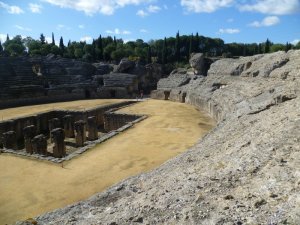

The city’s demise began in the 3rd century when the course of the Guadalquivir river changed, leaving the city isolated. The changing river-bed is now thought to have been caused by deforestation. At the same time the new, nearby city of Seville began to gather importance.
Before I left I wanted to see the Roman Theatre. The attendant at the main reception indicated that it was away from the complex and in the town. I set off for a walk – a long walk it turned out to be. Eventually I saw a sign pointing up a side road, which I followed, but then was met with a choice of three streets, none of which had any signage. By trial and error I eventually I found a gate which stood open. I went in and stopped at the the kiosk only to find the attendant sitting inside fast asleep. I left him to his slumbers and passed by. But the only access was to a viewpoint..
It was impossible to reach the laid out paths around the tiered seating and the arena. At the back of the site was an area strewn with marble pillars all lying about as if in a junk yard. I couldn’t help but wonder what English Heritage would do with it were they to come upon such a treasure in Britain..
As I was returning to the car, the rain started and it fell heavily as I drove back towards Seville. Driving through the local shopping area, I spied a Chinese Bazzar – almost every town in Spain has at least one of these. They sell all manner of household and hardware goods. I parked and went in feeling very optimistic. Sure enough, I found a rim and pneumatic tyre which would replace my broken wheel. For an amazing €7.50. A worrying problem solved.
Saturday……………….. The day started with fog and even when it cleared, the clouds refused to break. I stayed on site during the morning replacing my broken jockey-wheel. Then after lunch I drove into Seville. Finding a parking place was extremely difficult. Even on-street parking areas have their unofficial attendants who get angry if you happen to park without having had their invitation and guidance.
I eventually found a parking spot so unloaded my bike and set off through the Maria Luisa Park towards the Plaza de Espana. Both the Plaza and the Park were built as part of the 1929 Spanish/American Exhibition. Probably because of the American financial collapse during that year, the exhibition didn’t turn out to be a great success but the park and the amazing buildings remain as a popular visitor attraction. I remember making a day trip here in 1995 from our camp site in Malaga. Where we parked our car then, is now a pedestrianized area.. And with today’s dark clouds pictures were turning out to be a disappointment.
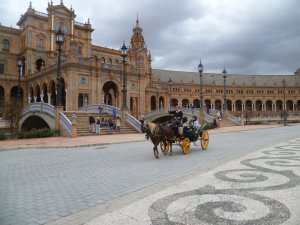
Part 4 0-0-0-0-0-0-0-0-0-0
Sunday………..I had planned on leaving Seville today but last night my daughter sent me a text and said that heavy rain was forecast for during the night but Sunday would have clear skies and all-day sun. Within the hour the rain started, and made a deafening noise on the caravan roof. But by the early hours the rain had ceased and the moon was shining through clearing skies. Maybe the forecast was going to be right.
After an early breakfast, I packed up some lunch and set off for Seville again. In the city the traffic was light and I quickly found a suitable parking place for the car. With the bike unloaded I set off on my tour. Seville is a very bike friendly city. If you don’t have a bike there is a hire system where you can collect a bike from a docking station, use it as you will, then leave it at one of hundreds of similar points throughout the city. Bike routes are marked with their own system of traffic lights. The bike traffic lights comes at a cost to the motorist. Driving in Seville requires a stop for a red light every 200 yards or so.
My first stop was at the Plaza de Espana to reshoot yesterday’s pictures. What a difference a bit of sunlight makes.
The Plaza was already busy with visitors and for an unknown reason, a sound system was belting out terrifically loud music.
After a quick ride around with stops for pictures, I headed for the river. My route took me past the building that was once the Royal tobacco factory. When Columbus returned from America with tobacco, the Royal family quickly took control of production. Bizet set the first act of his Opera Carmen here with Carmen working as a cigar roller. The building is now part of Seville University.
Looking down the river from the bridge, the Tower of Gold was on my right.
As I stood on the bridge I couldn’t help seeing the hundreds of padlocks marked with the names of lovers who have left their signed and dated mementoes.
Having admired the river scene, I set off through narrow streets for the Cathedral. The precincts of the Cathedral are full of permanent stalls selling souvenirs, ornaments and other religious tat. Probably a couple of dozen of them – and all selling the same items. Then there are buskers playing all manner of instruments – some of them rather well. My favourite was a guy on a clasical Spanish guitar. He was playing Rodrigo’s Concierto de Aranjuez which was rather apt since I had only just travelled from there. Some of the performers were more amusing.
The Cathedral was originally built as a mosque but after the Arabs were driven from Spain, it was converted to Christian use and is now said to be one of the largest Christian churches in the world.
The Giralda which stands along side the Cathedral was the Mosque’s original minaret but with some additional height added in the 1500’s, is now the Cathedral’s bell tower.
The queues awaiting admission to both places stretched for 200 yards or more, so I decided not to join them. A quick ride around the extremely narrow streets of the Jewish Quarter then it was time to find my car.
It was going to be a late lunch, but I decided to take another drive out to Italica and see the Amphitheatre in the sunshine. And being Sunday, it was very busy. I would have enjoyed taking another look at the mosaic floors in the sunlight, but the thought of dragging my weary legs up the hill was too much. Instead I returned to the car for some lunch and a beer.
Part 5 0-0-0-0-0-0-0-0-0-0-0-0
Monday……. It was time to leave Seville today. I stopped at reception on the way out to pay my site fees. For the four nights I expected to pay €84, but, I discovered there was a further 10% IVA to add. However, for some unknown reason they deducted €17 discount, so I paid slightly less than what I expected. Maybe because of the time of year.
For my route to Malaga I needed the Autovia going in the direction of Granada – the A92, and the shortest distance to it was across country but I’d already driven part of that route and found it contained so many roundabouts that I decided it would be easier to do the longer distance via the motorways. According to Tomtom I had 165 miles to do. The first 80 or so miles were reasonably flat with the satnav showing an average height of 195 feet, but then the road began to climb and in no time it had changed to 2300feet. And I would like to have stopped for a coffee break but laybys or service areas just didn’t exist – only small filling stations, all some distance from the motorway. Finally I saw a sign indicating a picnic area in 500 mtrs. I slowed down and pulled in. What a mistake! It was nothing more than a big patch of mud full of huge potholes – and I discovered the exit road had been blocked off. Fortunately the only other vehicle there was an HGV so I slowly bumped my way around and came out. I finally reached my destination without having had a stop.
When I got to Torrox Park I left the outfit up the road and walked down to the site entrance. It must have been just after 2pm because Muriel, one of the receptionists was just finishing her shift. We greeted one another and chatted for a while, before going to the site’s cash machine. The policy at El Pino is that site fees are paid at the time of booking in – even if you intend to stay for a month. Therefore I needed around €300. Once check in was done I went to collect my outfit and bring it onto site. Several weeks ago I’d arranged with Muriel to occupy the same pitch as I had last year so I found a cordon of plastic tape around the pitch. Having a mover on the van is invaluable because the trees and the narrow roads make it impossible to manoeuvre the van into its position whilst attached to the car. Having got the van levelled, legs down, water and electric connected, I decided that I’d done enough for one day. Tomorrow would be time enough to worry about erecting the awning and unpacking the car. A late lunch and a sit in the sun was all I needed for the rest of the day.
Tuesday……………….. A big mistake. I should have got the awning up yesterday. Even before it was light, the rain had started. And it continued for most of the day. In the afternoon I drove down to Torrox Costa for some much needed shopping. And just along the familiar road was a new roundabout installed, with one of the roads leading into the car park of a new Lidl. This supermarket now competes with an Aldi, a SuperSol, an Eroski and a Mercadonna – all within walking distance of each other. Prices in the shops aren’t much different from last year. A 33cl can of 4.7% German beer in Aldi is still 27cents – the price it’s been for as long as I can remember. What is different is the exchange rate. This year a Euro equals around 80p whereas last year it was nearer 86p, so over four months the saving should be worthwhile.
Wednesday. A much better day for weather, so with grey water tipped and the Aquaroll filled, I began to unpack the car. First out was the awning bag and poles. Sadly my good friends Willy and Yvonne have not arrived here yet, so I was going to be without Willy’s help in putting up the awning. To say I found it hard work is an understatement. Threading the cord; even erecting the poles was not too arduous, but pegging down was a real nightmare. Old joints don’t bend quite like they once did, but by mid-afternoon, with my kitchen equipment installed in the awning, it was all done and I was able to sit back with a drink, feeling that I’d accomplished something on my first day in the sunshine
Part 6 0-0-0-0-0-0-0-0-0-0.
.It’s three weeks since I arrived in Torrox to stay at El Pino and I’ve quickly slipped into the regular routine of previous years. Breakfast is done with by 8.30, washing up seen to by 9, then grey water tipped and Aquaroll filled. Then the ground sheets which I’ve fitted beyond the awning over the fine sandy earth, swept clear of leaves which have now started to fall. By 10.0am with the awning front zipped down to the verandah bars, the sun has got sufficiently high to make it a pleasant spot to sit with a cup of coffee and watch the world go by.
Fortunately my pitch is next door to the Wifi area and if the Internet gods are smiling I can connect my computer from either the van or the awning. Having said that, the connection is very hit and miss. If it does happen to be working I spend some of the morning on the computer. And if it isn’t – I get to doing one of the caravan jobs that always seem to need doing. One such being my water pump which failed at the start of my journey. I got a new one ordered off ebay and within the week it arrived and was fitted.
In the afternoons I either take a bike ride from the site down to the lighthouse, then along the prom – a total distance of about 6 miles.
Or for a change of routine I drive the car with the bike on board to Nerja, Frigiliana or Viñuela. It’s an interesting cycle ride to park the car on Playazo Beach,
 then cycle along the various proms into Nerja, then through the maze of narrow streets, eventually reaching the Balcon – a broad pier-like walkway with fantastic views out over the sea, and built on top of a projecting cliff.
then cycle along the various proms into Nerja, then through the maze of narrow streets, eventually reaching the Balcon – a broad pier-like walkway with fantastic views out over the sea, and built on top of a projecting cliff.
Local folklore has it that the Balcon was built on the instructions of King Alphonso who visited the area after a destructive earthquake in 1885. The local council has put sufficient trust in the story that, a few years ago they commissioned a bronze statue of Alphonso to stand alongside the Balcon railing.
In earlier times a fort stood on the cliff top, one of several along the coastline which were destroyed by the English navy to prevent them falling to the French during the Peninsular War.
On some other afternoons I drive to Lake Viñuela, which is along the coast motorway for 8 or 9 miles, then a turn inland for a similar distance. The road at first is flat along the valley floor, but then it begins to climb and it’s in a higher valley where Viñuela is situated. Although it is known as Lake Viñuela,
it is really a man-made reservoir formed by a dam being built across the Guaro River. The surrounding area is laid out with tracks and paths with picnic tables and seats. Ten or so years ago I remember the spot was a favourite place for visiting motor-caravanners to camp wild. But no longer – times have changed.
The majority of the outfits at El Pino are brought by caravanners who have been coming for several years. So it’s nice to take an amble around the place to have a chat with people I’ve met in previous years. In another section of the site there are a number of permanent wooden chalets where the owners live for most of the year and go back to the UK occasionally. Then there are one or two who leave their caravan with awning erected on a pitch, then drive solo to it for their stay. It’s an attractive proposition which I’ve considered – but then I wouldn’t have the use of the van throughout the year in the UK.
The weather generally has been good, often with sunshine from morn till evening, with night-time temperatures often not falling below 18C. A few days have been cloudy, whilst others have been windy. Occasionally we have had the odd wet day. But all this week the forecasters have been warning us to prepare for rain in the latter part of the week. And sure enough, in the early hours of Thursday morning I heard the gentle patter of rain drops begin on the van’s roof. By 9am the rain was torrential with crashing thunder and hailstones.
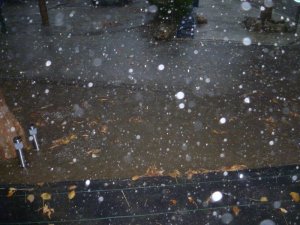 The camera’s view of the hailstones.
The camera’s view of the hailstones.
 The ‘river’ flowing past my awning
The ‘river’ flowing past my awning
Quickly the roads and pitches were awash with water, and except for a brief half-hour during the afternoon when the sun popped out, the rain continued all day and throughout last night. Friday’s weather was only slightly better. Short lulls followed by heavy downpours.
But the barometer looks to be rising, and already the sunshine is streaming into the awning once again.
Part 7 0-0-0-0-0-0-0-0-0-0-0
The recovery in the weather was short-lived. By mid-day the black clouds were rolling in and by early afternoon we were back with the heavy rain. Dull days with occasional rain showers has been the order for the early part of the week, but today we’re back to blue skies.
So after an early lunch I loaded the bike into the car and drove along the coast road towards Nerja. The drive is less than five miles but it is along a most beautiful piece of coastal scenery.
I parked the car on the dirt road which runs along Playazo Beach and then unloaded the bike.
By riding along the proms and narrow streets, it’s possible to reach most of the bays and beaches. The first beach one passes is Torrecilla, named after the fort which once stood on the headland.
Next comes Playa Calahonda – a favourite with its open-fronted restaurants and bars. The prom is lined with benches , most of them occupied by people who were taking their siesta in the sunshine. From here one must turn inland and take one of a warren of narrow streets – many of them pedestrianized.
The next tiny beach is Playa El Salón which is approached by a steep, twisting narrow lane, the entrance of which is almost hidden by the Balcon Hotel. At the back of the beach is a collection of fishermen’s cottages which appear to be still occupied.
I stopped for a while on the Balcon where electricians were busy putting up the Christmas lights. On the 6th of January there will be a huge crowd of people gathered who will have followed the procession of the Three Kings through the town. Here, in the square, outside the church, the Three Kings together with their entourage will climb to the stage to greet a baby Jesus. It will be the Fiesta de Los Reyes.
On the eastern side of the Balcon are two more tiny bays whose only access is by some steep flights of steps.
Finally we come to the largest and most popular of Nerja’s beaches – Burriana with its several beach side restaurants and shops. Having locked my bike to a sturdy railing, I took stroll along the prom. It’s always entertaining to watch the cooks at work cooking paella outdoors in huge pans over an open fire.
0-0-0-0-0-0-0-0-0-0-0-0
My Norwegian friend of several years arrived on site at lunch time. Already we’ve sat in the awning and had a long chat. He and his wife – and dog have been enroute since the 16th November. UK travellers tend to think they’ve had a long journey when they’ve done 1300 miles from Calais to Southern Spain. Omund’s drive from his home in Norway to here is 4900Kms – 3060 miles.
Part 8 0-0-0-0-0-0-0-0-0-0-0
We have a wet weekend here in Torrox Costa so what better way of filling in the time than by writing the next page to my blog. So far it isn’t heavy rain just a gentle patter on the van roof and it will probably do little towards filling the reservoirs since the ground is so very dry. There’s been no appreciable rain for the last three weeks so the reservoirs really do need it even if we campers don’t. If they don’t fill now, then there’s little chance of it happening in the coming months.
Many of the caravanners here who are staying over Christmas have decorated their awnings and vans with Christmas lights.
My lights live permanently in the van so it was easy enough to drag them out and position them the same as last year (and the year before!) The supermarkets also have their traditional displays of Christmas fare —
no turkeys — but as the posters declare “Lots of ham” and fish.
Whilst I was there, from amongst their Christmas offers I picked up a litre of San Miguel for the ‘silly’ price of €1.19 – £0.93p
A couple of days ago I decided to take the short drive up into the hills to visit Frigiliana. Although it’s only 3 or 4 miles from the coast, the village stands at about 1200 feet above sea level. It’s one of the white villages that was built into the hillsides during the Arab occupation of Spain. Consequently not only are the streets very narrow, but many of them are stepped.
With the sunshine, the foliage, the flowers and the out-door restaurants, it was hard to imagine that it is December. As I walked the narrow streets I saw an amusing sight concerning three cats — two toms and a female.
The female was quite content to sit and watch the two rival toms contesting, but since they did nothing but howl at each other, and taking so long about it, the female finally became bored and wandered off.
Perched right at the top of the hill are the remains of an Arab castle and the story is that when the Arabs were being attacked by the rival Christians, many of the women, with their children threw themselves from the castle walls rather than be captured.
Outside the village, on the hillsides there is still the evidence of the ancient technique of cultivating fruits and vegetables using a system of terraces built up with stone walls
From Frigiliana I drove onwards and upwards for another three miles before turning off onto an unmade road. The track wended its way upwards and downwards, backwards and forwards around the mountain side for another four miles, until eventually I arrived at El Acebuchal. This tiny hamlet built at the bottom of the ravine has a sad yet fascinating story to tell. It came into being during the 17th Century since it was on one of the mule routes carrying goods between Granada and the coastal towns and villages.
But during the Spanish Civil War, and even in the years after the war, the Guardia believed that the villagers were aiding the guerillas and ‘bandits’ by providing shelter and food. Some of the villagers were summarily executed; others were imprisoned, but eventually, all of those remaining were ordered to leave. The roofs were pulled down so the houses became uninhabitable. And so the village became the “Pueblo el Fantasmas” – the village of ghosts. And so it remained for the next fifty years.
Only as recent as 1998 a descendant of one of the original families decided to try to rebuild his grand-parents old house. Those premises have now become the village’s bar and restaurant which has built up quite a reputation. Several other houses have been renovated and occupied, whilst others are still derelict.
In 2003 electricity came to the village, however there is still no land line telephone and of course no paved road. The church was rebuilt and used for the first time in 2005.
Part 9
The Christmas festivities got off to a flying start on Sunday with the XXXIII Fiesta de las Migas being held in the Pueblo. Everyone was invited to take a plate of ‘crumbs’ and some glasses of wine. The ‘plates of crumbs’ maybe needs some explanation. The tradition dates from the times when labourers were at work tending the vines and olive groves. When it was time to finish for lunch and siesta, a conch shell was blown and the labourers gathered together at the ‘perola’ – where the crumbs were prepared. In the Plaza de la Constitución there’s a statue of a young man blowing the conche which commemorates the tradition.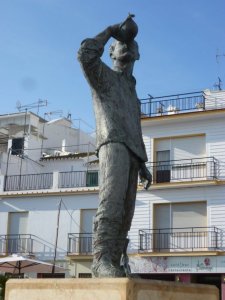 The ingredients of the ‘crumbs’ consist of olive oil, garlic, water, semolina and salt. To accompany the crumbs there was a salad made up of pieces of cod, olives, onions and oranges. It was this meal that was offered to the fiesta visitors.
The ingredients of the ‘crumbs’ consist of olive oil, garlic, water, semolina and salt. To accompany the crumbs there was a salad made up of pieces of cod, olives, onions and oranges. It was this meal that was offered to the fiesta visitors.
Driving in Torrox Pueblo is difficult at best of times but on fiesta days the entry roads are closed, so I travelled by bike. As I arrived in the town’s main car park, volunteer groups had already got wood fires lit and were setting up huge pans supported on concrete blocks.

Barrels of wine were positioned in several places around the carpark and the first glasses were been drawn off.
I’m told that during the weeks before the fiesta, a wine competition is held where the wines are judged and from the winners, the wines which will be served at the fiesta are chosen The one I sampled was a sweet white wine, but very potent. After the first few sips I couldn’t help but wondered if riding a bike whilst under the influence was a chargeable offence!
The cooking of the crumbs was being done by many voluntary groups then helpers filled the plates and brought them forward to counters where they were placed for the visitors to help themselves.

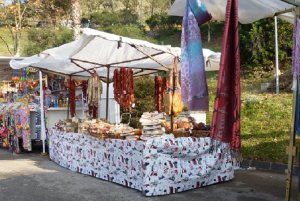

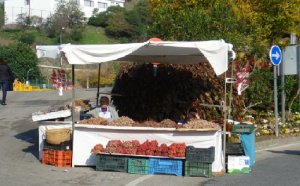 In the centre of the park, stalls were set up where various locally produced food products were being offered for sale. There were stalls with honey, smoked sausages, bread, bacon, hams, wines, figs and of course portions of paella.
In the centre of the park, stalls were set up where various locally produced food products were being offered for sale. There were stalls with honey, smoked sausages, bread, bacon, hams, wines, figs and of course portions of paella.
Meanwhile in the Plaza de la Constitución a stage had been set up where later there would be displays by various groups of dancers and players. Around the sides of the plaza the bars and restaurants were filling their pavements with tables and seating, ready for the merry-making which continues till after dark.
0-0-0-0-0-0-0-0-0-0
Next day – the Monday – and it was off to the airport to meet one of my daughters who would be staying for Christmas week. As it was early afternoon when we left the airport, we did the ten minute drive to Torremolinos beach where we sat for a while to soak up some sunshine, before doing the 36 miles drive back to Torrox. In the evening, we went out to one of our favourite bars for dinner. Later, we wandered through the Nerja alleys to the Balcon to see the Christmas lights. As always – they were spectacular.
0-0-0-0-0-0-0-0-0-0
Another glorious day, so we packed some lunch and set off eastwards along the coast. Rather than shoot along the A7, we took the N340 coast road which takes in some beautiful scenery. We decided to stop at the Andalusian village of La Herradura, which lies in a sheltered bay situated between two natural promontories, the Punta de la Mona and Cerro Gordo, both of which protect the lovely 1.5 mile long beach. As is often the way in Spain, I was able to drive off the road onto the beach where there were no parking restrictions. We unloaded our sun loungers, enjoyed the sunshine and watched the waves rolling on to the beach.
Later in the afternoon we set off back. Not through the tunnel which was cut for the N340, but via the original road which goes up and around the Cerro Gordo. When we reached the highest point, we parked the car and climbed the rest of the way up the hill to where the watch tower was built.
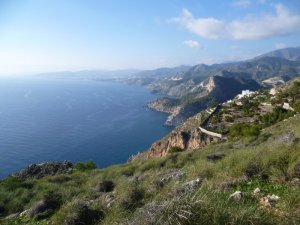
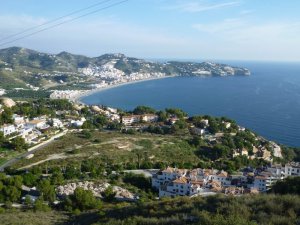 During the 16th Century watchtowers were built on every available promontary so that fishermen could be warned of approaching pirate marauders who came across the water from north Africa. Many of the watchtowers still exist and are protected. Although the Cerro Gordo tower is only 200 yards from the road, the path is steep and rocky and exhausting. But the view on a good day – in both directions is stunning.
During the 16th Century watchtowers were built on every available promontary so that fishermen could be warned of approaching pirate marauders who came across the water from north Africa. Many of the watchtowers still exist and are protected. Although the Cerro Gordo tower is only 200 yards from the road, the path is steep and rocky and exhausting. But the view on a good day – in both directions is stunning.
Also there’s a very good chance that an Ibex will show itself.
Again we decided to go into Nerja for dinner.
This will probably be the last posting before the New Year so I wish all who read this Feliz Navidad y un próspero Año Nuevo .
Part 10
For the past week or so the weather on the Costa del Sol has been near perfect and we’ve been able to get out and about every day. On Boxing Day – although here in Spain they don’t have one – it’s a normal working day – we took lunch with us and re-visited Frigiliana. However many times one visits this village, there’s always another stepped alleyway to explore in the village.

This time we took the Calle Ermita which took us to one of the highest view points. Later we had a picnic lunch in one of the squares where an Alhambra-style water feature had been created.
In the afternoon my daughter said she would like to see El Acebuchal, the deserted village which I described earlier in the blog.. So once again we took to the dirt roads to reach the ravine. Some different view points made for some different pictures.
And w0-0-0-0-0-0-0-0-0-0
On another day we decided to visit Comares.
Martin & Maggie, my CT friends told me about this village when I met them at El Pino last year. Although the place is less than 10 miles as the crow flies from the coast, it sits on top of a mountain at 2400 feet and is reached after 18 or so miles by road. Its height makes it one of the highest of all the white towns in Andalucía. Fortunately it’s sufficiently remote that it hasn’t yet got onto the popular coach trip programmes.
The first thing one meets on arrival is the rebuilt Puerta de Malaga. It had it’s official opening only six weeks ago, so it all looks very new. It’s built in an Arab-TaylorWimpey style and I just wonder if it’s not in danger of making this historical village look more like a theme park.
Throughout the village, there are colourful ceramic plaques depicting Comares´ important place in history. The Moors built a castle in Comares and two of the towers that reinforced the walls are still standing close to the cemetery.
Like many cemeteries in Spain where the soil is shallow, there are no graves. Only tombs built four or five high – rather like drawers in a filing cabinet.
Almost every street, besides being extremely narrow, is built on a very steep incline.
The jury is still out on whether it’s easier walking up than walking down.
On one of the few level areas at the top of the village is the Plaza de Los Verdiales with its huge ceramic wall feature showing dancers who dressed not unlike our own Morris Men.
Verdiales, besides being the name of an olive-growing district to the north of Malaga, also gives it’s name to the dancing groups who still compete against other groups in a form of flamenco. It’s taken so seriously here that a statue of one of them is situated in the square. It is believed to have started amongst the Moriscos muslims and it’s an intriguing thought that perhaps our tradition of Morris dancing may also have its roots here.
Comares was finally conquered by the Catholic Kings in 1487 when Arab and Moriscos were either put to death or deported..
0-0-0-0-0-0-0-0-0-0
On another day we drove to the tiny village of Maro which is just a couple of miles along the coast from Nerja. The village is perched on a cliff top high above the sea and for those who venture down the cliff face via the winding footpath, there is the reward of reaching a beautiful, deserted cove. But being venturesome we drove along a concreted pathway between the plantations. The lane took us backwards and forwards getting ever closer to the sea, until at last we reached an area with three marked out parking places. Reversing for the return was perilous because of the steepness of the road.
It was still a 200 yard walk down to the beach but because of the steepness, I contented myself with the view from where I was. Maybe another day!
0-0-0-0-0-0-0-0-0-0
For Monday, my daughter’s last day with me, I had planned on driving the 45miles to Benalmadina to travel on the cable car, but although the day was blessed with a cloudless sky, there was also a terrific wind blowing. Which ruled out the cable car. Instead we found a sheltered spot on the beach at Torre del Mar. We had a picnic lunch there and after a siesta, my daughter set off on a walk around the bay to Mezquitilla. I drove the car to the same place, parked and unloaded my bike. We met up in due course for a cup of tea and a sit in the sunshine and later drove into Nerja for dinner at the Bamboo.
0-0-0-0-0-0-0-0-0-0
Tuesday morning was all hurry and bustle. Today was the sad day when I had to take daughter to the airport. However we made time to have a half hour sit on Torremolinos beach before having an early lunch. But then, with an eye on the clock, we did the ten minute drive to the departure level to say our Goodbyes.
Benalmadina is only 10 minutes drive from the airport, so I consoled myself with a ride on the Teleferico before returning to Torrox. The cable car carries passengers from sea level to the top of Mount Calamorro which is at a height of more than 2500 feet.
The journey time is 15 minutes and I arrived at the top just in time for the birds of prey display.
There’s a railed walkway up to the highest peaks but it’s a hard scramble over rocks to reach the two viewing platforms.
I satisfied myself with views from lower down. As I travelled down in the cable car at 2.50, I saw what was probably my daughter’s Easyjet taking off over the sea, on it’s way back to Gatwick.
Part 11.
On Tuesday we had The Festival of the Three Kings – The Spanish call it Fiesta de los Tres Reyes. For many people here the day is equally as important as Christmas Day. In some families only small gifts are exchanged on Christmas Eve with the main gifts being kept until the 6th January.
During the evening of the 5th the first fiesta of the year is held when they celebrate the arrival of the Kings. The fiesta takes the form of a procession through the town with the youngest children, all suitably dressed in costume, being carried on floats.
The Kings, together with their entourage are also carried on three floats, all fitted out with wonderfully decorated thrones.
The procession is led by young people walking on stilts and wearing various styles of fancy dress.
Between the floats there are groups of dancing children and teenagers in beautifully designed matching dresses.
Then there are the bands. Several of them. One is a jazz band. Another, the Nerja Woodwind and Brass Band which has members from the tiniest tots to more elderly players. I thought it really good that so many of the players were young teenagers.
Each float has it’s own particular choice of music belting out, so there is a deafening cacophony of noise.
The procession is timed for a five o’clock departure from a car park on the edge of town, but as is often the way with Spanish events, the advertised start time is flexible, so they did well to get the column moving by 5.20. The procession wends its way slowly through some of the main thoroughfares of the town until at about 7.30 it arrives on the Balcon de Europa, where a large platform had been erected in front of the church. As the floats make their way through the town, the three Kings throw sweets at the waiting crowds – not a few sweets, but hundreds of them by the handful. Not only the children but some adults scramble madly to collect them.
Once the procession had got under way, I went to find my bike and I cycled down to the promenade where I was just too late to see a setting sun.
After admiring the sea view for a while, I went into one of my favourite bars for a leisurely dinner and a San Miguel.
Then it was back to the fiesta. I rode through the narrow streets and reached the Balcon to find it already crowded.
Joseph and Mary together with a baby Jesus were already sitting in their stable on the stage. What a brave young mum and baby she was to take on that role, not knowing how the baby would ‘perform’ on the night. They must have been on the platform for close to 90 minutes.
Eventually the procession arrived with the dancers and bands veering off to a nearby plaza whilst the Kings with their retinues continued on to the stage to present their gifts.
And suddenly it was all over for another year. But the Spanish love an excuse for dressing up and having a party so within a few weeks, they’ll be another fiesta – and they go on throughout the year.
Part 12
On Thursday evening nearly everyone who has been at El Pino for more than a few weeks met together in the bar to say our goodbyes to Muriel, one of the receptionists here. Muriel has been at El Pino for several years and her happy cheerful nature is going to be missed.
Apparently she has decided to take up work as a freelance interpretor for which she will be extremely well qualified. Be it British, French, German or Spanish visitor that arrived at reception, they all were greeted in their own language.
So there was a large crowd both in the bar and outside on the balcony where we waited for the arrival of the party-girl. In due course she arrived and spent the next half hour or so doing the rounds to embrace everyone individually.
After some short speeches and flowers, there was a presentation, together with the biggest greetings card I’ve ever seen, which we had all previously signed. As Muriel continued with the hugs and Goodbyes, a buffet was served, whilst an entertainer played and sang. A lovely evening tinged with some sadness.
We owe our thanks to Martin and Trevor for organising the evening so well.
0-0-0-0-0-0-0-0-0-0
A windless day with a blue cloudless sky persuaded me that it was time I took another full day excursion. I decided to visit El Torcal which is a drive of around 50 miles from Torrox. My journey began with the seven mile drive along the A7 motorway before turning inland and heading up towards Lake Viñuela.
I stopped close to the Lake side to take a few pictures before continuing through some beautiful countryside where most of the cultivated land was given over to olive and almond growing, some of which were beginning to bear blossom.
Eventually after several miles, the road crosses under the Malaga to Antequera motorway before reaching the village of Villanueva de la Concepcion with it’s orange tree lined streets.
From the village the road wound its way upwards through some weird rock formations before reaching a car park at a height of 3600 feet. On getting out of the car the sudden drop in temperature emphasized the fact. It wasn’t long before I was reaching for a heavier jacket. At one end of the car park is a cafeteria, toilets and a visitors’ centre. Also in an adjoining building is an observatory which was closed.
The information boards in the visitors’ centre tells us that around a million years ago the whole area was once under the sea. Then violent eruptions forced the sea bed up into hills and mountains. The limestone retained its layered formation but gradually wind and rain has worn away parts of the rock leaving the weird and wonderful shapes we see now. The whole area of the park covers around seven square miles and there are three marked routes – the shortest taking around 30 minutes, whilst the longest takes more than three hours. I settled for about 10 minutes of the short route before turning and retracing my steps. Not only did it have some precarious climbs over rocks but in places some patches of icy ground.
I had a picnic lunch in a sheltered spot, before walking along a gravelled footpath which led me to a balcony with a marvellous view where the village looked so tiny far below me.
Eventually it was time to start the return journey whose first part was down the mountain side. I was only too aware that journey down was on the outer edge of the road, so I was thankful that I covered that part without meeting on-coming traffic.
For the sake of a speedier return to Torrox, I took the motorway to Malaga and then the A7 along the coast.
Part 13
Earlier in the week this was the view from my caravan’s front window at 7.20 in the evening.
One of my daughters came to visit me for a few days. I collected her at Malaga airport off her Easyjet flight early afternoon on Friday.
As the beach is only ten minutes drive away, we went for a sit on the prom in the sunshine before driving back to Torrox.
Disappointingly the next day got off to a bad start with some rain, but by mid morning the rain had stopped and the clouds had been moved on by the strong wind which has been blowing all over Spain for several days. The high wind has even upset the sailing schedules of the Brittany Ferry which was unable to leave Santander on Thursday for its sailing back to Portsmouth. Not until Sunday was it able to leave. Now schedules are all upset with sailings delayed by approximately 40 hours.
However by lunch time the weather had improved so we drove along the coast to the small town of Herradura. Here there’s a long beach protected by headlands at both ends forming a horseshoe shaped bay. Normally the shingle beach would have many parked cars on it. However on Saturday there was very little beach left on which to park. Huge waves were still rolling in but during the previous night, the rough sea had thrown sand and rocks up towards the shops and restaurants.
. A couple of groups of young Spanish guys were making the most of the waves with their wet-suits and surf boards.
Later, in the evening we went to the Bamboo Restaurant for dinner and we arrived just too late to catch the sunset.
Sunday was a complete turn around. Clear blue skies – but still with some wind. We decided to visit another Andalusian white town. This one was Canillas de Aceituno – built as part of the Kingdom of Granada when the Moors were in Spain.
 Canillas from a few miles away
Canillas from a few miles away
Welcome sign at Canillas One of the streets
Consequently streets are very narrow and as the town is built into the mountain side, most streets are on a gradient.
A street of steps. Avenida de Andalucia
Potable?? The feral cats are friendly.
No date seems to be known when the town was captured by the Christians, but in the 16th Century a Moor arrived in the town looking for his wife who was a slave in a Christian household. He and his friends began their search but their activities quickly turned into a riot with eight Christians being killed. The town’s leaders had the Moors tortured and put in prison. Sometime later, the king gave orders to have all the remaining Moors expelled and the castle which was once situated on one of the town’s highest points, destroyed. With the Moors expelled, the village was repopulated with new families brought from Antiquera and Archidona. The town still has Arab archways and water tanks with their ‘potable’ water supply – although I wasn’t tempted to sample it.
A newly built Plaza
On another high point in the village is the Church of Nuestra Señora del Rosario which was built in the sixteenth Century. It has two Baroque chapels together with other treasures and sculptures, but unfortunately we couldn’t gain entry since the church is closed for restoration work.
During it’s life time, the town has experienced several disasters. French troops arrived in the town during the Peninsular war and many of the religious treasures were pillaged. Then over a period of several years all the vines became diseased with the virus. A Cholera outbreak and famine followed. On Christmas Day in 1884 the earthquake which devastated much of southern Spain killed several people in the township and damaged dozens of buildings.
The town was in the Republican zone during the Spanish civil war, but after the war Spanish and Italian Fascist soldiers were stationed in the town to combat the actions of anti-Franco resistance groups operating in the Sierra Tejeda mountains..
The village stands at a height of 2200 feet above sea level, consequently the temperature was much lower than when we set off from Torrox. Together with the wind, we were glad to return to the car. However in spite of the colder climate almond blossom was already on the trees. Our drive back was all downhill with some beautiful views over valleys and at one particular bend in the road, a superb view of Lake Vinuella.
 Lake Viñuela viewed from Canillas
Lake Viñuela viewed from Canillas
Another view of the Lake View from the new Plaza
Once we were off the mountain roads we headed for the beach at Torre del Mar. There we found a sheltered spot, unpacked our sun loungers and enjoyed a packed lunch. An enjoyable day was later rounded off with a return to the Bamboo.
Monday morning and time to do the airport run again. I was already behind schedule for leaving, but to add to my worries, a large motorhome beat me to the barrier gate. The barrier went up, the motor-van moved forward out into the road, his rear wheels dipped into the rain channel and his extremely long, low overhang dragged along the ground splitting his rear panel.
The driver got out to investigate but was unwilling to move either forwards or backwards in case of causing further damage. At that point I reversed and got the receptionist to open the inward barrier so that I could make my exit.
On arrival at Malaga we headed straight for the beach where we got out our sun loungers so that Jenny could soak up her last hour of sunshine.
Within ten minutes of leaving the beach we were at the departure entrance. After saying our Goodbyes, I returned to El Pino where I found some new neighbours had arrived.
Part 14
A wet day so an opportunity to add some blog. My diary shows the last wet day as the 18th January. Twenty-five days ago, so mustn’t complain.
One of my more enjoyable household chores is in the kitchen. I do enjoy cooking and one of my favourite recipes is to bake a Farmhouse Fruit Loaf.
And since I like cake in the caravan as much as I do at home, I bake in the awning using a small electric oven. Mixing bowl, digital scales, spatulas, loaf tins and paper liners all live permanently in the caravan. I’ve modified a whisk, which I insert into the chuck of my cordless drill, so it doubles as a food mixer.
Shopping for ingredients in Spain can sometimes be a problem. For instance, wholemeal flour isn’t generally available. Neither is the white self-raising variety. Glacé Cherries are also difficult to find, and packets of dried fruit are expensive. Therefore all these ingredients, I bring with me.
One day last week I was almost ready to remove a cake from the oven when friend Bob passed by. He saw my oven gloves and stopped to see what I was doing. Bob is another long-term caravanner here at El Pino and I already knew he was a retired cook. We talked cake-making and ovens for awhile, and then he told me he’d made a cheese cake only the day before. On his next journey passed my van, he brought me a slice. It was delicious! I really was impressed. He made me the offer that he would be making another one in a week or so, and if I cared to, I could see it being done.
So last Sunday was the day arranged for our Master Class – only by then, Graham, my neighbour, who is another lone-caravanner was also interested. As it was a nice sunny day we decided to work in Graham’s kitchen tent.
 Bob getting to work with his mixing
Bob getting to work with his mixing
Bob laid out his ingredients – none of which feature in the Slimmers Guide. There was Chocolate & Hazelnut biscuits; Butter; Sugar; Cream cheese; double cream, plus a bar of chocolate. First the biscuits were crumbled and pressed into the base of the round tin.
 Ingredients go in one at a time
Ingredients go in one at a time
Then the remaining items were added and blended together, one at a time until, when it was all of a creamy consistency, it was poured onto the biscuit base.
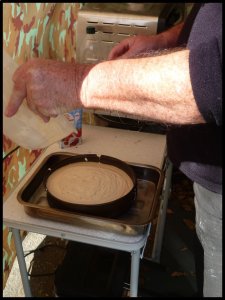 The batter is poured on to the biscuit base
The batter is poured on to the biscuit base
Then the cake tin was put into a roasting tray half filled with water and put into the oven for an hour and a quarter.
Next day we had the cutting and sampling. We were not disappointed!
The end result.
0-0-0-0-0-0-0-0-0-0
I haven’t been into Nerja since Christmas so I decided to drive to the outskirts then ride my bike through the town.
It was so pleasant sitting on the Balcon in the sunshine, and without any wind for a change. Even the feral cats were stretched out enjoying the warmth of the sun.
Although the Balcon cats are feral, they are obviously looked after, since they all look extremely healthy and are not averse to a bit of attention. But then they have the Balcon Hotel’s waste food bins close by so they will not be going hungry.
Not so with some of the other feral colonies. They rely on any local cat lover for a daily feed. And some of the cat families are large.
 How did this ‘aristocat’ become feral?
How did this ‘aristocat’ become feral?
We’ve had some days with a very strong wind with clouds over the mountains however one day earlier in the week was perfect. Sunny and bright, with very little wind. I decided to take a packed lunch with me and drive along the Velez valley. When I reached the Lake I took the right hand fork and drove up the road to Alcaucin. This is another village built in Moorish times with narrow, steep streets. It’s just about possible to squeeze a car through the village, but it leaves very little room for pedestrians and one always hopes there’s no oncoming traffic.
The first interesting feature one meets is the restored Arab Fuente San Sebastian, one of several naturally fed springs which run continuously When I first arrived in the village, several local cars were there with open boots containing many 8ltr water bottles. They were all being filled with spring water, then carried home. The water is supposed to have medicinal properties and the folk-lore has it that if you drink from the centre spout, the drinker will marry someone from the village within the year. Not being one to tempt fate, I chose the spout on the left.
Higher up the village is the 16th Century Church with its two-bell tower.
As is often the way now, the church was locked. Walking away from the church I passed by a peluquería with it’s front door standing open. As I‘m now approximately four months away from my last haircut and in need of my daughter’s hairdressing skills, I ventured inside. No one about but all the hair salon equipment was there. I could hear voices in the distance so I called out “Hola” – and presently a young girl arrived. She spoke no English but by gestures she finally gathered that I would like a haircut so she invited me to sit down. She got busy with her scissors for the next twenty minutes or so and finally she finished. I took out my wallet and asked her “cuanto?” She held up five fingers. £3.75 for a haircut!!. I told her I would come again next year – not that she understood.
Two other natural springs in the village
I continued climbing up Calle del Calvario until finally I reached a mirador where there was a stunning view over the village and surrounding countryside.
In the past few days the almond blossom has started to come into bloom. The hillsides look lovely with it.
Further up the hill I came to the Hermitage of Jesus del Calvario which dates from the 18th Century.
Behind the hermitage is the village cemetery. I took a quick look inside the gates and found the usual tomb system with the name plaques attached. I couldn’t help but notice the ages of the occupants. Most of those I saw were in their late seventies, eighties and nineties. Who knows – maybe the water does have medicinal qualities. Or maybe the exercise of walking up the hilly streets keeps them fit.. Before leaving the cemetery, I saw the memorial for all the locals who were killed or murdered during and after the civil war.
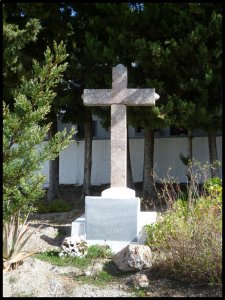 For those killed during the Spanish Civil War
For those killed during the Spanish Civil War
I returned to the car and set the satnav for Alhama de Granada, one of my favourite towns. On my way out of Alcaucin there was a stark reminder of the bursting of the Spanish housing bubble in 2008.
Although built seven years ago these houses and apartments stand derelict.
There are hundreds of these dwellings, many of them practically finished, standing deserted. Further across on the same site were three skeleton apartment blocks. Almost every town in southern Spain has one or more similar developments. One cannot but wonder whose money is tied up in them.
But first I stopped off at Periana to see the newly built Mirador de la Peña.
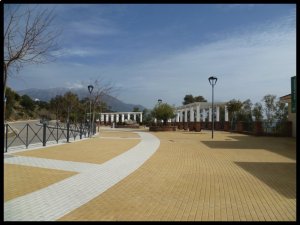 The mirador overlooking Vinuela
The mirador overlooking Vinuela
The hoarding tells that it was inaugurated in 2011 and built in partnership between Andalucia and the EU.
It certainly has some fine views over the countryside and Lake Vinuela. The huge platform has been erected on built up ground alongside the ravine, but obviously the infill has not had sufficient time to settle, because already there are signs of subsidence.
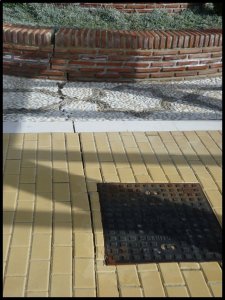 The crack opening up down the entire length
The crack opening up down the entire length
Back on the road, I headed for the ‘U’ shaped pass through the mountains.
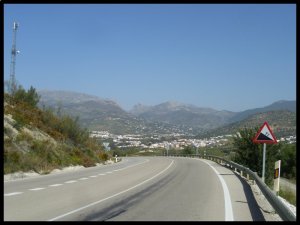 The road through the mountains
The road through the mountains
The road twists and turns it’s way up the hill to a height of 3000 feet before reaching the village of Ventas de Zafarraya.
 The view back towards the coast
The view back towards the coast
Then the road turns to the right behind the mountain and for the next five miles runs in an almost straight line through a flat, cultivated valley bottom, before turning once again to climb even further, giving spectacular views of the snow clad Sierra Navada before the road drops down towards Alhama.
 The town is perched on the edge of the gorge
The town is perched on the edge of the gorge
This is another town which dates from the Moorish occupation of southern Spain. It sits perched on the edge of the gorge. Outside the town are the thermal springs where the Arab bath houses were built. However, evidence has been found of earlier Roman activity around the springs. Before setting off on my journey back to Torrox I took one of the paved pathways down to the bottom of the gorge to see the remains of two water driven flour mills.
0-0-0-0-0-0-0-0-0-0-0
Part 15
As the saying goes – All good things must come to an end. And now it’s time to think about going home. So on Sunday I spent the morning cleaning and packing away all my kitchen equipment from the awning. Then on Monday as promised, friend Willy turned up at 10 oclockish to help me take down the awning. He insisted on getting a scrubbing brush and cloth and cleaning all the mud from the awning skirt. I don’t think the mud wall has ever been so clean. By lunchtime all was packed away into the car so we thankfully sank into sunloungers with a beer. Tuesday I spent doing the rounds saying goodbye to various friends who I’ve known from previous years, then getting the van turned to enable an easy take off for the start of my journey. I have five days in which to get to Santander so some sight-seeing is planned for on the journey back.
0-0-0-0-0-0-0-0-0-0
An eight o’clock start turned into an eight-forty pull-out. It was nice to have Graham, Willy and Martin all down to see me off. Within minutes I was on the A7 heading east towards Motril. For the first time ever I was able to ignore the twisty coast road and stay on the new section of motorway all the way to Motril. From there the motorway heads inland towards Granada. Although it’s only 25 miles, the climb goes from sea level up to 2600 feet in the distance. Also the dashboard temperature gauge went from 16C down to 6C, After 90 miles I stopped for a coffee break then continued onwards until I reached Santa Elena, where I planned to stop for the night.
The village of Santa Elena is situated right on the edge of the Desfiladero de Despeñaperros. The latter word literally means ‘dogs plunging into the gorge’. On the 16th July in 1212 a battle took place on the site of the village between the armies of King Alphonso of Castile and the muslim ruler of the southern Iberian Peninsular. It became known as The Battle of Las Navas de Tolosa. Because a section of Alphonso’s army were led through the pass by a local guide, the Moors suffered a huge defeat with thousands of their wounded being left on the battlefield. One authority has suggested that the ‘dogs’ which plunged into the ravine were captive soldiers. A monument in the village commemorates the battle, as does a plaque on the church wall.
Battle Monument Site entrance
Inside the site
The campsite is situated at the far end of the village off its own service road. It’s a Class 1 site which accepts ACSI cards. Toilets and showers are first class, although for some reason the toilet pans have not been fitted with seats and lids. Each pitch has its own water tap and waste water disposal. There is also a free Wifi connection which covers the whole site.
I arrived on site at 12.30 so I quickly connected water and electricity, then had some lunch.
By two oclock I’d put the coordinates for Aldeaquemada into Tomtom. Although the place is only 9 miles away as the crow flies, the road twists and turns over the mountain for 22 miles.
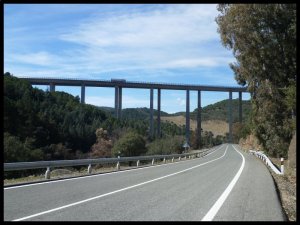 Motorway crossing the original road
Motorway crossing the original road
One section of the road was lined with cork trees many of which had been stripped for their bark.
Eventually I arrived where the paved road ended and the dirt road continued. Having tried the first 100 yards of pot-holed road, I decided to park and unload my bike. For the first half mile the roadway was flat but then it began to climb steeper and narrower. Eventually I saw signs indicating the Cascada de la Cimbarra which led away on a narrow track. Before long the track was too steep and rocky to take the bike any further so I left it locked to a tree. I continued on foot for another 600 yards, unfortunately that was 300 yards down then a similar distance up before coming to the mirador where one could look down onto the waterfall with a deep pool at its base.
The river before it reaches the waterfall.
The signs indicated that the track continued round completing a circular walk however, I needed to retrace my steps to collect my bike.
Tomorrow I plan to continue my journey north for another 130 mile tow and heading for Toledo. I’ve allowed for a stay for two nights there to give me a day in town.
0-0-0-0-0-0-0-0-0-0
By evening there were ten or so caravans and motor vans at Santa Elena for the night. Two had already gone by the time I was ready to leave at 8.45. I headed down to the southern end of the village so that I could rejoin the autoroute and take the new viaduct rather than the steep twisting road down into the ravine. Having crossed the gorge the road climbs for the next ten miles before reaching La Mancha, a flat plain given over mainly to grape production – and the home of Don Quixote .
Windmills and castle stands on the skyline
The first town on the route through La Mancha is that of Valdepenas where the slip roads are lined with bodegas and compounds full of wine making vessels. When I reached Madridejos I left the motorway to cut across to Toledo. The small town of Consuegra lies just a couple of miles from my route, so I did a slight detour to take a closer look at the line of twelve windmills sitting on the hilltop together with the remains of a castle. All the windmills have been restored and are now used as workshops.
By lunch time I had reached Camping El Greco, the only campsite listed for Toledo. It’s a Cat 1 site with sandy pitches divided by hedges. Pitches tend to be on the small side and none would accommodate caravan, awning and car comfortably. Very few pitches were occupied during my stay. Toilets and showers are in a heated building and are of a high standard. Entrance and exit is controlled by a barrier which is lifted at the whim of the receptionist. Surprisingly you must be back on your pitch by 10pm – otherwise your car is left outside. A free wifi connection is available but only in the vicinity of reception. As soon as I‘d finished a quick lunch, I set off to see the City. On the south side of the river the road climbs upwards over the cliffs and at one point there is a marvellous view across the river towards the old City. Unfortunately it had turned out to be a cloudy day so photo opportunities were disappointing.
In 193BC this part of Spain was conquered by the Romans and because of its strategic position being surrounded on two sides by water, quickly grew in importance. After the fall of the Roman Empire, the city became the capital of Visigothic Spain. It remained so until the Moors conquered the Iberian peninsula in the early years of the 8th Century. By the 11th Century King Alphonso V1 had taken the City so it became part of the kingdom of Leon-Castile however, even in the13th Century Moors, Jews and Christians were living together more or less peacefully. In the 16th Century Toledo was the capital of Castile before being moved to Madrid. The city has always been famous for its production of bladed weapons and armour, so even today most streets in the city has a shop with its windows full of knives and swords – some of it – so we are told – being imported from China.
Shop counter and window displays their wares
The next day was a complete change. Gone were yesterday’s dark clouds. Only blue skies with not a cloud in sight. By nine o’clock I was ready to set off for the City again. I managed to find a parking spot close to the Puente de San Martin – the bridge and gate built in the Middle Ages.
The medieval bridge Puente de San Martin
The Tagus which finally runs into the sea at Lisbon
I crossed the bridge and made my way uphill through narrow streets towards higher ground where I hoped to find the Cathedral. Although the streets are very narrow, the early morning delivery vans were driving through them at an alarming speed. Like everyone else it was necessary to flatten ones self in doorways to allow them to hurry past. The first part of my walk took me through the Jewish Quarter and past the Sinagoga de Santa Maria.
I stopped to rest when I reached Puerte del Cambron before continuing my walk uphill. Eventually I reached the Cathedral, where having bought a ticket and hired a headphone set I entered. There has been a place of worship on the site since the 6th Century, sometimes a Cathedral, at others, a Mosque however, the present building was begun in 1227 on the foundations of the earlier building.
Toledo Cathedral
After leaving the Cathedral I decided to return to my car, unfortunately I came out at a different door and started the walk downhill. After ten minutes or so I eventually arrived close to the river, but to my dismay, a long way from the San Martin bridge. Were it not that I was already exhausted from my climb through the City and around the Cathedral, the walk along the river bank would have been most enjoyable. Suffice to say it was with some relief that I reached the comfort of my car. Before leaving, I returned once again to the mirador on the south side of the river, to find the view much better than the previous day.
The Toledo skyline showing the Cathedral and the Alcazar
I continued around the perimeter of the City to see the Puente de Alcantara, the Roman bridge across the River, before returning to the site for a very late lunch, a beer and a siesta.
Tomorrow it’s off to Burgos.
0-0-0-0-0-0-0-0-0-0
In spite of the temperature being down to 3C, by the time I was ready to leave Camping El Creco at 9.0am it was already looking as though it would be another beautiful day. Except for tourist coaches, the town was fairly traffic free. I quickly reached the A42, the autovia which after 40 miles brought me to the southern outskirts of Madrid. Although it’s 10 or so miles longer, I decided to turn on to the M50 which took me round in a wide circle to reach the A1. Normally the A1 going north is very quiet but for some reason it was very busy. Maybe because it was Saturday. By 11 o’clock I’d reached the foot of Somosierra and as often happens, the weather changed. Gone were the blue skies.. Instead heavy cloud. I began the climb which continues for four miles, reaching to a height of 4750 feet. Once through the tunnel, there’s the long run down the other side. Eventually at 1.15 I reached Burgos and with the weather looking brighter, decided to stop at Fuentes Blancas for the night. Because of recent heavy snow and rain, the ground looked very soft and water-logged. So much so that quite a lot of motor-vans had parked in the roadways. I decided to do likewise. After some lunch I drove closer to the City, found a parking place and unloaded my bike.
 Sculpture relaxes in the Plaza
Sculpture relaxes in the Plaza
I headed for the Cathedral first. Burgos is said to have one of the largest Cathedrals in Spain.
I bought a ticket and went in. Whenever I visit an historic building I cannot help but marvel at the superb level of craftsmanship that was achieved with such basic tools. I couldn’t help but notice the similarity of the carving on the choir stalls here and where I’d just been at Toledo.
Maybe the same craftsman – or maybe two carvers taught by the same master. Who knows?
From the Cathedral I wheeled the bike up the hill to the Castle.
It was here that in 1812 General Wellesley, later to become The Duke of Wellington led an Anglo/Portuguese Army in what he hoped would be a last push to force the armies of Napoleon back across the border into France. However it took longer than he expected. The French defeated every attempt to take the Castle, however after a siege which lasted over a month, the defenders finally surrendered. But after an appalling list of casualties. Between the two armies, 1000 were killed and 2000 severely wounded. A plaque outside the Castle entrance commemorates the dead of both sides.
0-0-0-0-0-0-0-0-0-0
With only 120 miles to go before reaching Santander there was no need for an early start. I left Fuentes Blancas at 9.30, heading through the city to take the cross-country route to join the A67 at Aguilar del Campoo. I stopped at Vivar to fill up with diesel. This village just to the north of Burgos is the birthplace of one of Spain’s national heroes, Rodrigo Diaz de Vivar who later became known as El Cid. I travelled for 50 miles on the N627. When I reached Aguilar there was still evidence of the recent snowfalls. It was this area, only two weeks earlier which was shown on UK television with the motorway blocked and UK caravanners stranded by very deep snow for several days.
I finally reached Santander shortly after mid-day and booked in at Camping Virgen del Mar. This site is very handy for the ferry terminal since it’s just five miles away across town or 8 if you do the journey by motorway. It’s a large site but in the winter months most of it is closed off with only a small portion being used. When I arrived the pitches were very water-logged so it was suggested that I stayed on the roadway
The pitches are extremely narrow, and defined by trees, but quite deep, making it almost impossible to erect an awning. Toilets and showers are very nicely tiled however the shower cubicles have nowhere in the dry to hang clothes or towels. Also the lighting is on a timer switch so “don’t dilly dally on the way” otherwise you’re left in darkness. Near the reception someone has been creative in making plant holders using old tyres.
Someone being creative
Site fees are charged at the same rate throughout summer and winter, thus making it expensive for a ferry stop-over. Being on my own, the one night fee was an eye-watering €21, (presumably €26 for a couple), the most expensive site-fee of the entire journey from Torrox. Also, they don’t allow dogs.
The rain started as I approached Santander but by afternoon it had stopped and the sky had brightened somewhat. So I took a walk from the site down to the sea where there is a large car-park and cafe. The outer walls of the cafe are decorated with dozens of old advertisements – all of British Companies.
The tail end of Biscay’s recent storm was still causing the waves to crash against the cliff faces. Just a 100 yards from the mainland is a small rocky island with a small chapel on it’s highest point devoted to the Virgen del Mar.
I have been here several times and an angry sea is usually the norm. Only once have I seen it calm and inviting.
Virgen del Mar can look like this – but not very often. This was 3 years ago,
Because of the Biscay weather, my sailing time was rescheduled three times. On Saturday it was put back by 2 hours, then by Sunday morning another two hours. Finally at check-in departure time was given as 9pm, making departure nearly six hours late. Of course weather delays can’t be avoided but Brittany Ferries do a very good job in keeping passengers informed both by text and email.
The Pont-Aven left on time but even before we were out of the Bay, the effect of the waves could be felt. However that was only when trying to walk about. By Sunday morning we were out of the storm area and it became easier to move around. Finally the shipped docked at Portsmouth at 9.30pm and within half an hour I was on my way home, which I reached just before mid-night.
As I did last year, I’ve compilled a list of expenses for the benefit of would-be travellers who might be contemplating a long stay.
Ferry for car, caravan and cabin from
Portsmouth to Santander or Bilbao & Return.………… £660
Site fees incl electricity .
Fees carry a discount of approx 50% off
the normal charges if they are booked by the month and paid in advance………………………………………………………..£760 For 14 weeks
Fuel
600 mile journey and return at 28mpg……………………£175
Tolls
From Santander to Costa del Sol the
entire journey can be driven on toll-free
dual carriageway. From Bilbao the toll charge was……..£15.50
Insurance
In my case with Red Pennant for 122 days………………£270
Comparison with 2013-14 year.
Ferry charge was £25 more.
Site charge for electric increased by £7.50 per month but a lower exchange rate kept the total the same.
Diesel costs were £50 less because of lower prices.
Red Pennant stayed the same.
And that brings this Spanish blog to an end. I hope you have enjoyed reading as much as I have enjoyed writing. So “Goodbye” till the next time I hitch on.



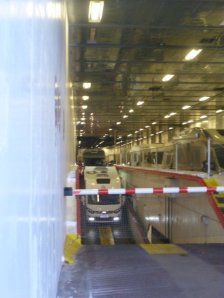



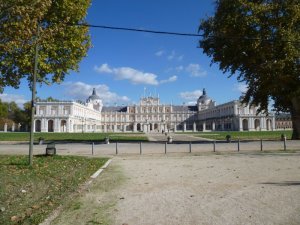
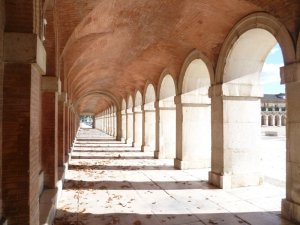


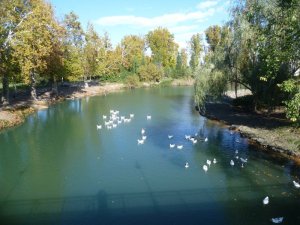








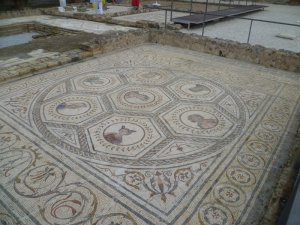

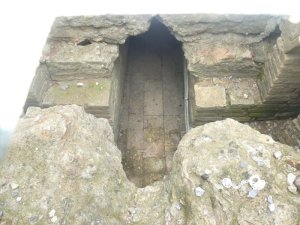




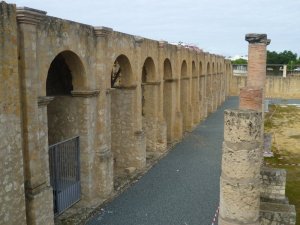
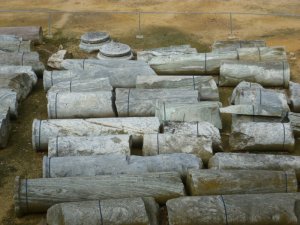
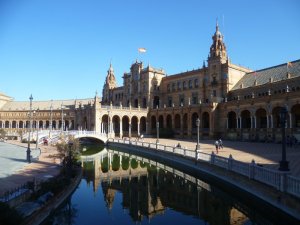









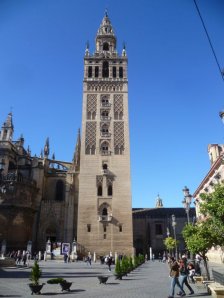

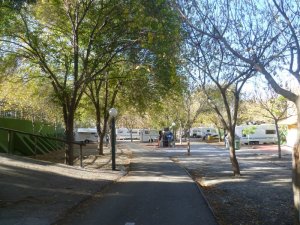

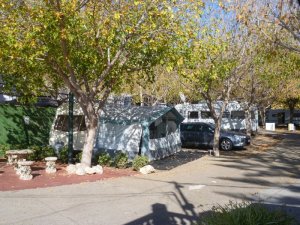






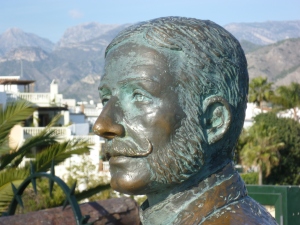
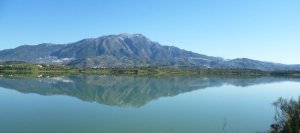
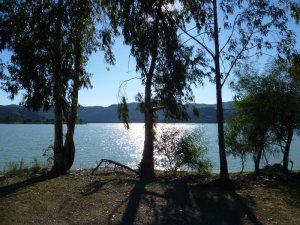
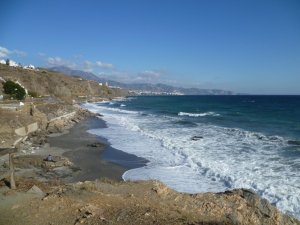

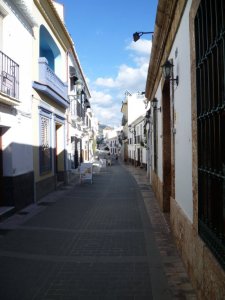
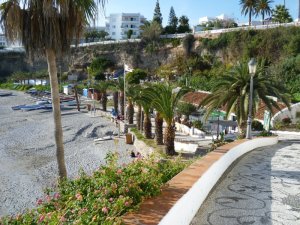
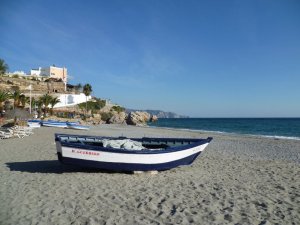
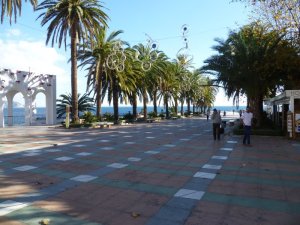
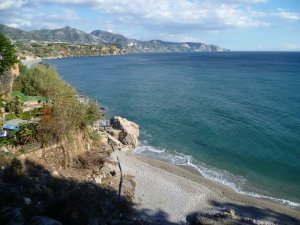



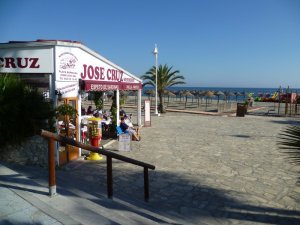
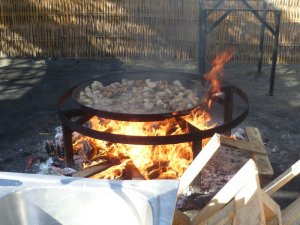



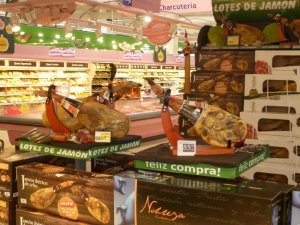
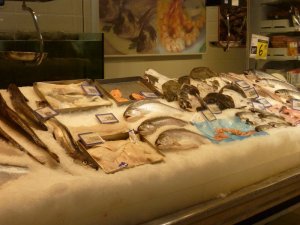
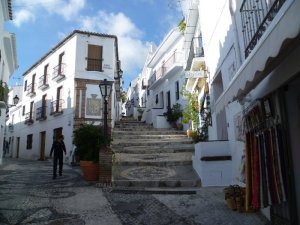

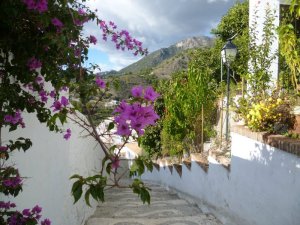

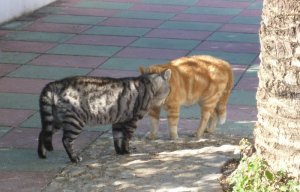
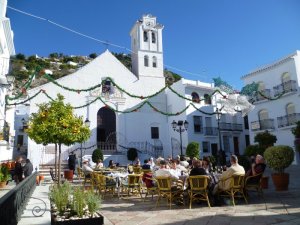
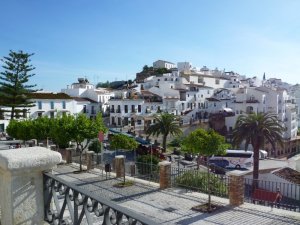

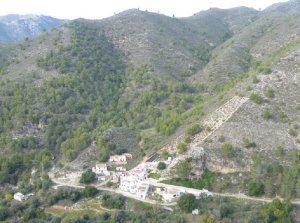


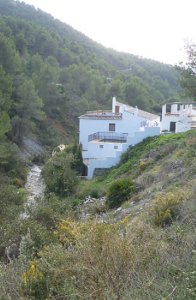

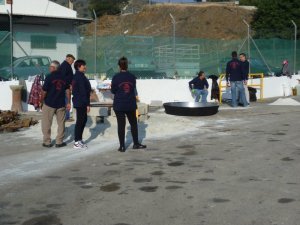


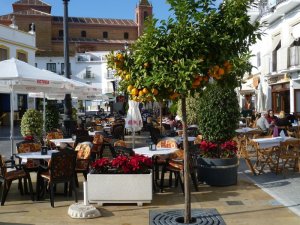
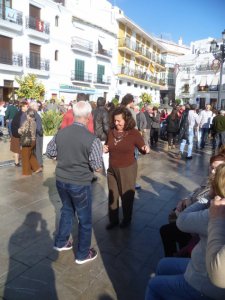
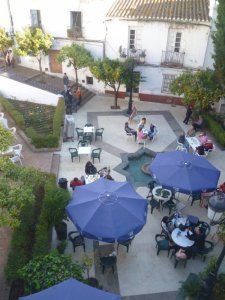

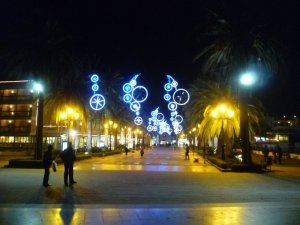

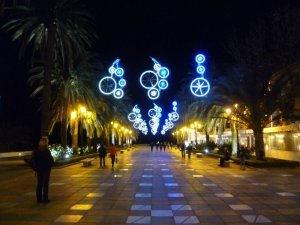
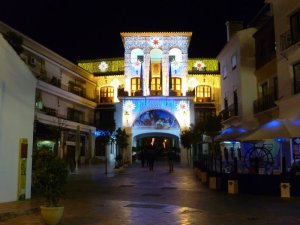



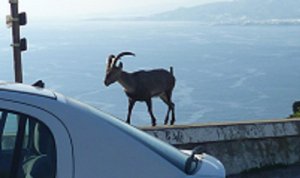
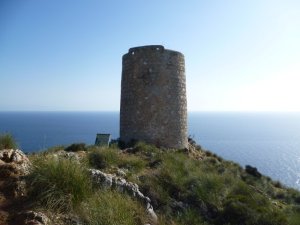

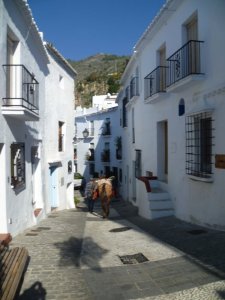
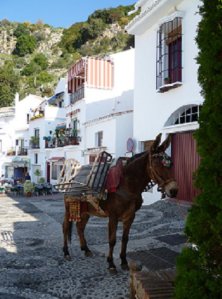

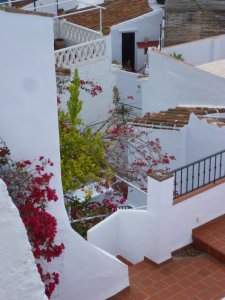


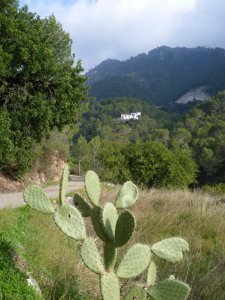

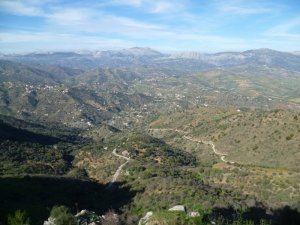


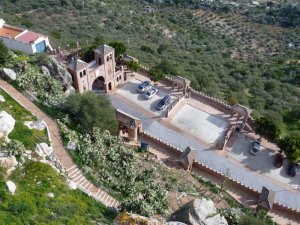
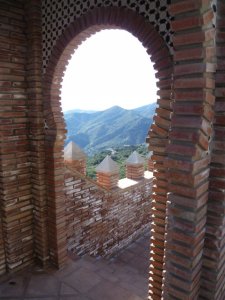






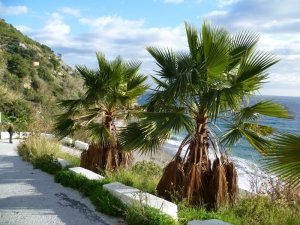
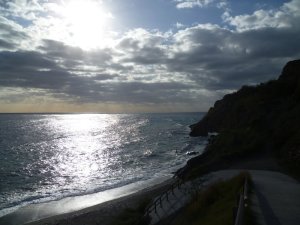







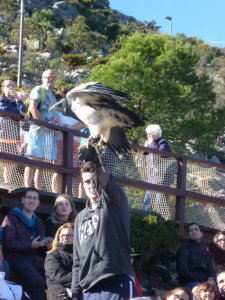
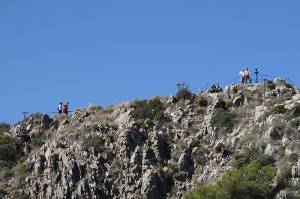

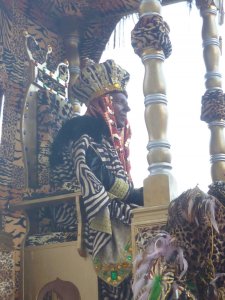

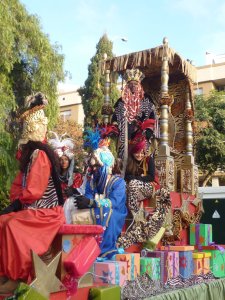



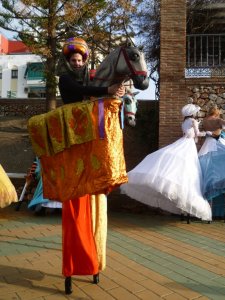

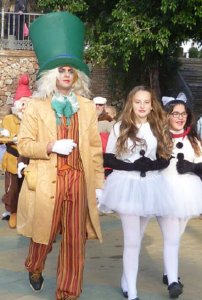


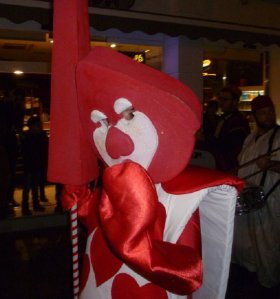
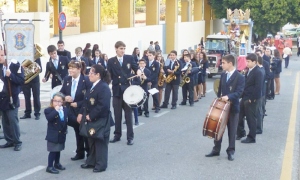

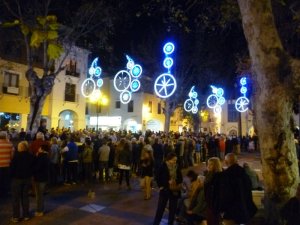
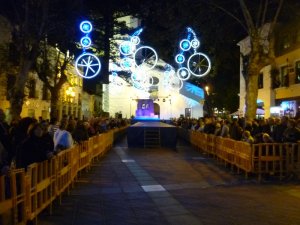

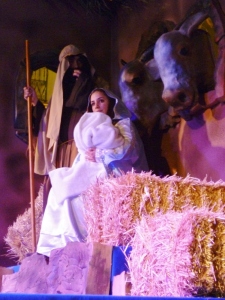


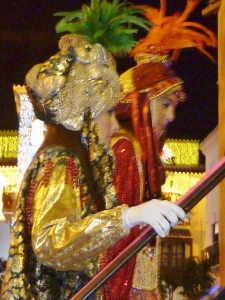

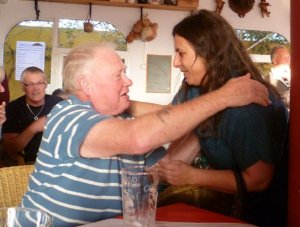



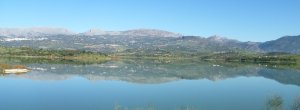

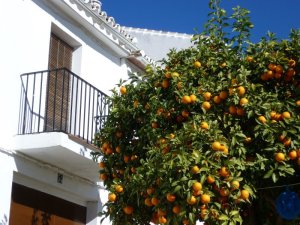

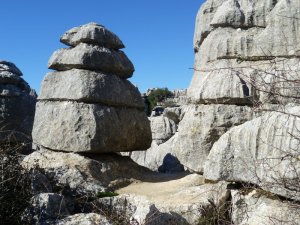




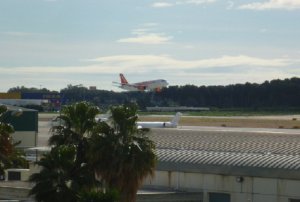
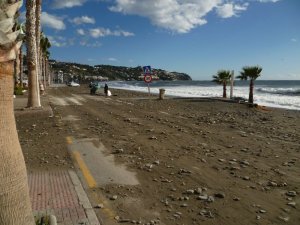 Storm damage at Herradura
Storm damage at Herradura 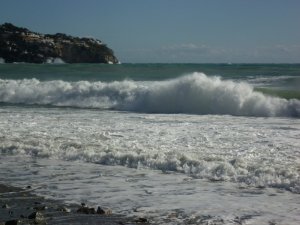
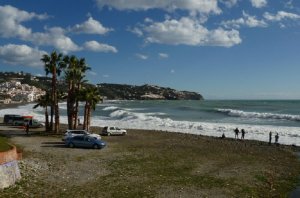







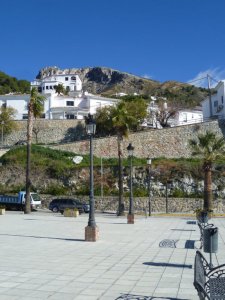






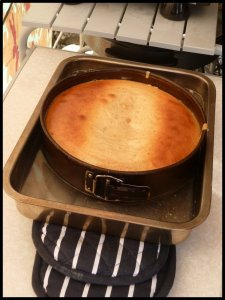

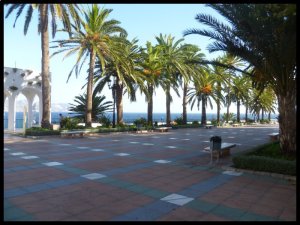


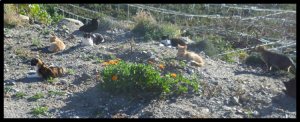


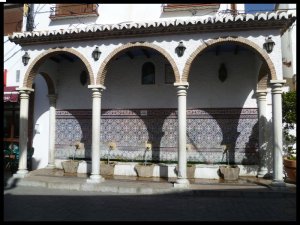
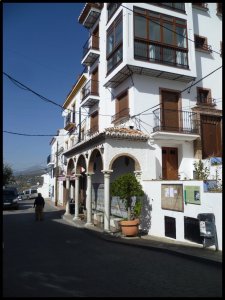




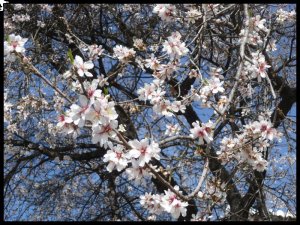


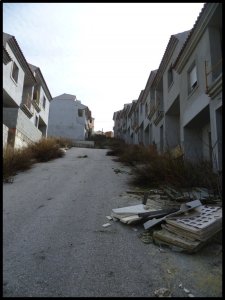
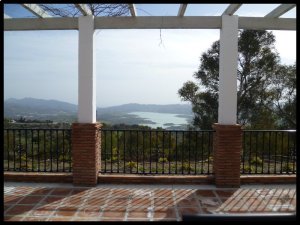
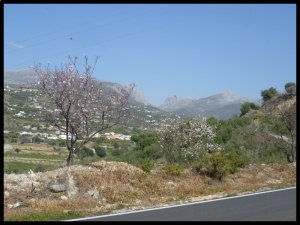









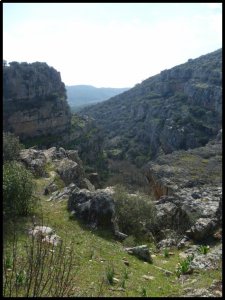





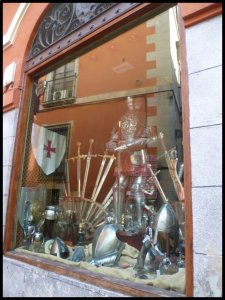
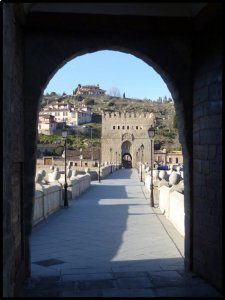
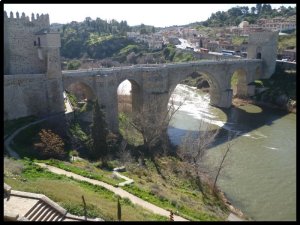




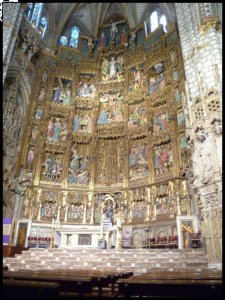
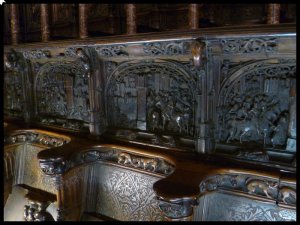

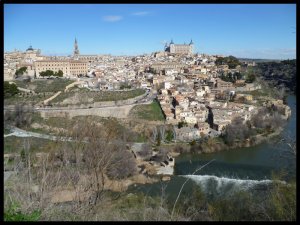
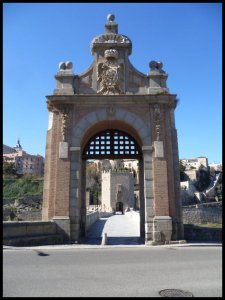
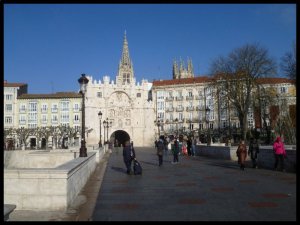


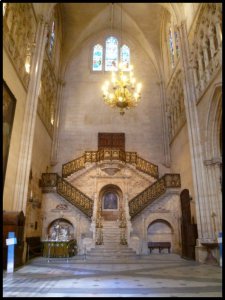
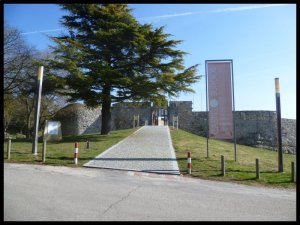
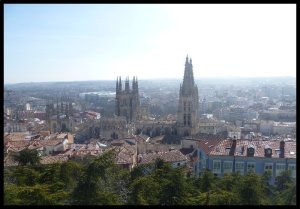

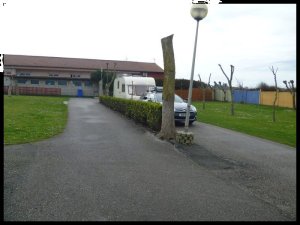
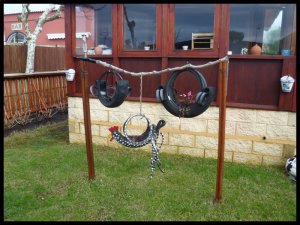


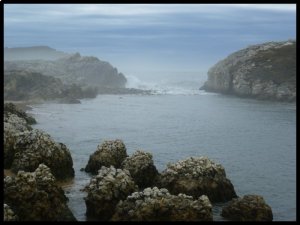

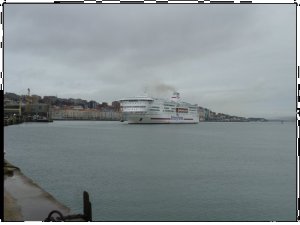
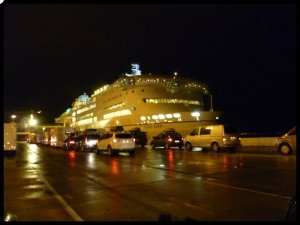
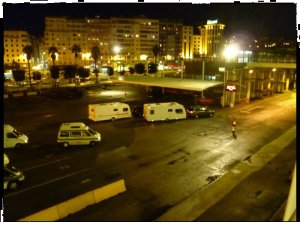
Hi
It is good to know you are back in El Pino for another Spanish winter after a safe journey down.
We have met at El PIno before several times but you probably will not remember.
I used to post on the CT forum but decided to leave as the site banned my little moving Union Jack flag contained in my signature.
My wife and I hope to arrive next year again arriving at the end of January to stay till the first week of March.
By the way we have done the almost exact same itinerary trip to Seville as you did even to staying at Villsom!
Enjoyed reading your blog
Bill
LikeLike
Hello. Of course I remember you. You are the Gaffer! Will look forward to meeting you again.
LikeLike
Really enjoyed reading your blog about your latest trip. One year perhaps I will be able to persuade hubby that a winter trip would be a good idea but I know he isn’t keen. If our new caravan is delivered on time we are planning our next trip to be to Province and the Languedoc at the end of April. We have to go early as I can’t deal with the heat. Enjoy the rest of your time in Spain. How exciting that you met someone who had read your blog. That happened to me in Austria a couple of years ago and I was chuffed that someone had bothered to read it!
LikeLike
Thank you for following my blog and writing your kind words. You will enjoy Provence & Languedoc. It was one of our favourite spots in the early ’90s.
LikeLike
Thanks for sharing your trip , absolutly fasinating I thoroughly enjoyed it. Im staying at Benidorm for 64nts in The Regente hotel half board. Arrived in time for the Three Kings fiesta but missed joining in , heard about it later from a lovely couple from Plymouth who described fleet of motorcyclists riding on their Harley Davidsons through old town of Benidorm. I wish id got the confidence to bring my Sprite Major over, but at 71 may be ive left it too late.? Plus id need to find a fellow travellor.
I picked up your blog via C4u.Youve certainly given me food for thought perhaps there is a trip to Spain to consider.
Regards
Bob Gardiner from Rhyl in North Wales
Majorbob
LikeLike
Thank you Bob for reading and commenting on my blog. I’ve written you an email.
LikeLike
Hi Jon,
What gorgeous pictures and great blog. We are the family from the Face2fb project. Thank you so much for your kind donation to cancer research – we have raised a great amount so far. It was so kind of you thank you, one day a cure will be found with help. We are continuing to travel with our young family and hope to return to El Pino this year, maybe our paths will cross again?! Xx
LikeLike
Thanks for your comments. I have another three weeks at El Pino before it’s time to journey home. Quite a lot more vans on site now than when you were here. Hopefully I’ll be back next year.
LikeLike
A very interesting read and we envy you as we have thought about it many times however with 4 Yorkshire terriers and 2 cats, it may be a bit difficult especially for 2 cats being locked up for 3 days while on the road. It would not be fair to put them in a cattery for 3 – 4 months. We lived in the tropics for many years and the day we left to fly to England was the middle of winter there and the temperature 26C. arrived here in the middle of summer and it was 11C. We really miss the sun!
LikeLike
Thank you for your kind comments Ian. Yes – that would be quite a collection of pets to caravan with. At the moment at El Pino we have a Scottish couple who are here with their four dogs, and some others who have just left with their two cats. The latter two are full-time motorhomers.
LikeLike
Hmm. I view of your answer maybe it is something we should look into. Thanks.
LikeLike
Fascinating read. I admire your detailed descriptions, not too long, just enough to captivate attention. I will continue to follow – now that I’ve stumbled across you superb site. Thank you!
LikeLike
Finally got round to reading the end of your blog for this trip and again admire and envy you the stamina and energy to undertake such a trip. I loved the idea that you didn’t have a hair cut for four months, you old hippy! Roll on your next excursion.
Jenny
LikeLike
The next Spanish tour is on the drawing board. Outward ferry crossing is already booked for the end of October
LikeLike
Hi,
I have really enjoyed reading your blog. We keep talking about going to Spain ourselves, and having read your comments I am keener than ever!
Well done and many thanks for such an entertaining and informative read.
Take care.
Paul
LikeLike
I’ve really enjoyed reading your blog (and all the others) – I almost feel I have seen the places you’re describing. Long may your caravanning days continue.
LikeLike
Thank you “Belle” for your comment. How’s that for coincidence? Only a couple of days ago I clicked on your link and added your blog to my favourites for future browsing.
LikeLike